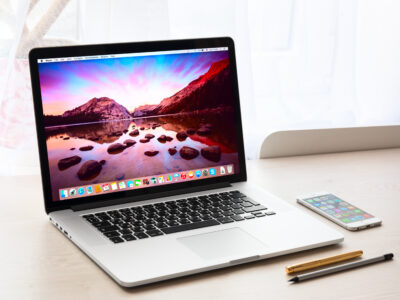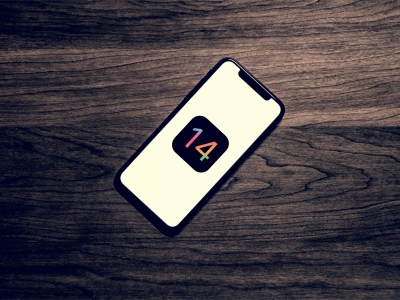
When he started classes at New York Medical College this past fall, first year medical student Ryan Lippell said he was surprised when he’d open his inbox. “I would receive all these e-mails about getting apps,” he explained. “A lot of people I know are talking about them.”
Digital content is quickly becoming an integral part of the medical school experience — and it has the students talking. “I know a lot of schools are doing away with printing,” Lippell continued, referring to a series of pilot programs at medical schools across the country. “Every student gets an iPad, that way they don’t have to carry textbooks or print out lecture slides.”
Indeed, tablet computers are gaining ground at medical programs across the country. Last year Stanford University issued iPads in place of course books to its first year medical students. In the ensuing months, similar initiatives followed at the University of Arizona, Yale, and several other schools.
As smartphone technology continues to improve the analog world, it is perhaps the healthcare industry that is most excited. While many fields embraced the iPad upon Apple’s initial release, few have adopted the technology as fully as the medical world has.
Yet the fact that the iPad 2 now fits in the pocket of a doctor’s white coat signifies a much larger trend in the healthcare profession: mobile technology is changing the way patients are treated, and the way hospitals are run.
Totally Dependent
For the past few years, healthcare apps for iPhones, Droids, and Blackberry devices have been growing more accessible to both students and professionals. These days, aspiring physicians understand that mobile app technology will be an essential part of their careers. They know this because the technology is already an essential part of their training.
“We’re totally dependent,” third year medical student Jane Gelfand said. “The thought of anything happening to my iPhone…it’s like my brain shutting down.”
It’s a popular sentiment among medical students, to be so reliant on their mobile devices. But it’s also not a disparaging one: today’s med students know that, just as they are the next generation of doctors, mobile apps are the next generation of medical care. Speaking to the future, Gelfand, who also teaches at Midwestern University, said, “as a student, being very familiar [with apps] gives you a leg up.”
Indeed, apps are now an everyday part of practicing medicine, and many full-time doctors freely admit to consulting them daily. According to a 2010 study by market research firm Kalorama Information, “more than 50% of physicians are using smartphones or PDAs on a regular basis for everyday treatment activity.” It’s an increasing trend — up from 25% in 2004, and 35-40% in 2008 — one that is certainly being sustained by the next generation of healthcare professionals.
“We all have phones now,” said Charley Randazzo, a fourth year medical student at The Ohio State University. “Compared to the 50- and 60-year-old doctors,” he explained, “we rely heavily on mobile apps.”
A Form of Counsel
Today’s apps serve a variety of purposes for healthcare professionals. While some cater to administrative functions, like productivity and workflow processes, others are more exclusive to medicine.
“Most people I know use Epocrates,” Randazzo explained. Based out of San Mateo, CA, Epocrates is a developer that provides a series of medical apps in free versions, as well as in paid, subscription ones. Their most popular is a reference app that offers specialized information about diseases and drugs; after entering a patient’s information into the app, a doctor can receive treatment suggestions, and determine the best course of action.
With its digital archive of pharmaceutical information, Epocrates can customize drug dosage to any patient’s specific needs. Algorithms reduce human error, and treatment is expedited. In this way, reference apps supplement a doctor’s education. They’re a form of counsel, helping to reduce risk, and better tailor a patient’s medical care.
By offering quick suggestions, apps like Epocrates also effectively shorten the decision-making process. Gelfand, who is studying to be an osteopath, lauded the use of such apps. “Medicine is about time,” she explained. “The quicker you can make decisions, the quicker you can act, the better.”
Connecting Hospitals
When it comes to critically ill patients, the biggest innovation in today’s medical landscape is the ultrasound machine. Although known to most as method of in utero examination, ultrasound machines are fast becoming at the forefront of diagnostic care. So revolutionary has the ultrasound machine been, that those in the medical press have dubbed it “the stethoscope of the 21st century.”
As such, ultrasound machines are now being used all over hospitals — not only in prenatal units, but also in emergency rooms. In response, demand for new and refurbished machines has substantially increased. It’s an emerging market, and at least one company has taken notice.
From their headquarters in Willowick, OH, Providian Medical specializes in medical equipment supply, serving not only physicians but also hospital administrators. To meet the growing demand for ultrasounds, Providian has developed a first-of-its-kind app that connects hospitals with ultrasound machines.
After users input their requirements, they’re presented with a list of available machines, displayed along with a price range, age of the machines, and system specifications. Healthcare professionals using the app are thus able to make the right purchasing choice based on their specific needs and budget, effectively getting the ultrasound machines to their patients faster.
As a safe and efficient method of diagnosing internal problems, ultrasounds “just save time and money,” explained Randazzo, who is going into emergency medicine. “With certain emergencies, if you were to use another diagnostic method, you could compromise the patient’s safety.”
It comes as no surprise then, that many in the medical industry are excited about developments such as Providian’s. While healthcare apps may have begun by connecting physicians with patients, they’re now connecting patients with progress.
A Different World
If there’s a watershed moment in the healthcare app sphere, it’s now. Witnessing the influence of mobile technology, today’s medical students are anticipating a different world tomorrow. According to mobile research firm Research2Guidance, by 2015, 500 million people will be using mobile healthcare apps.
The industry has been growing steadily, broadening over the past five years. Even the U.S. Food and Drug Administration is taking notice; in July of 2011, the FDA announced their plan to oversee the production of all medical applications, explaining that their approach “encourages the development of new apps.”
“They’re everywhere,” first year student Ryan Lippell wrote to me. Just this morning, Lippell, a newly minted member of the American Medical Association, opened his inbox. Inside he found the latest bulletin from the Association:
“The AMA recently challenged all physicians, residents and medical students to submit unique medical app ideas as part of the AMA App Challenge…The last day to vote is Friday.”
“There’s no going back,” he said.
Ben Kerson is a freelance writer. He lives in New York City.










Comments